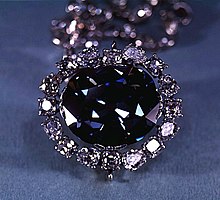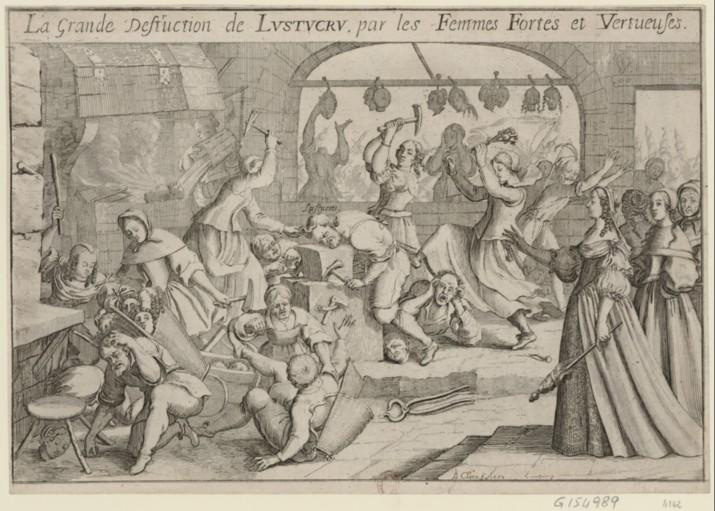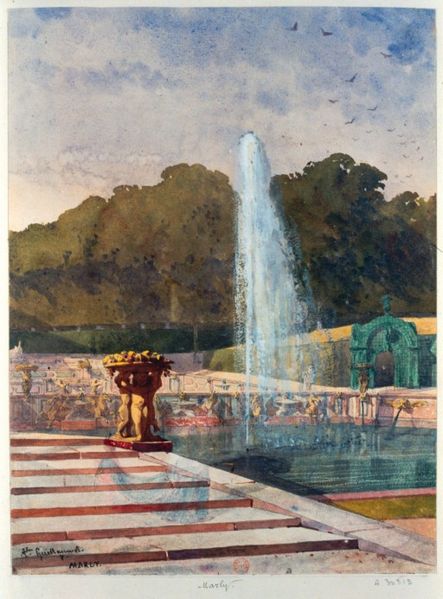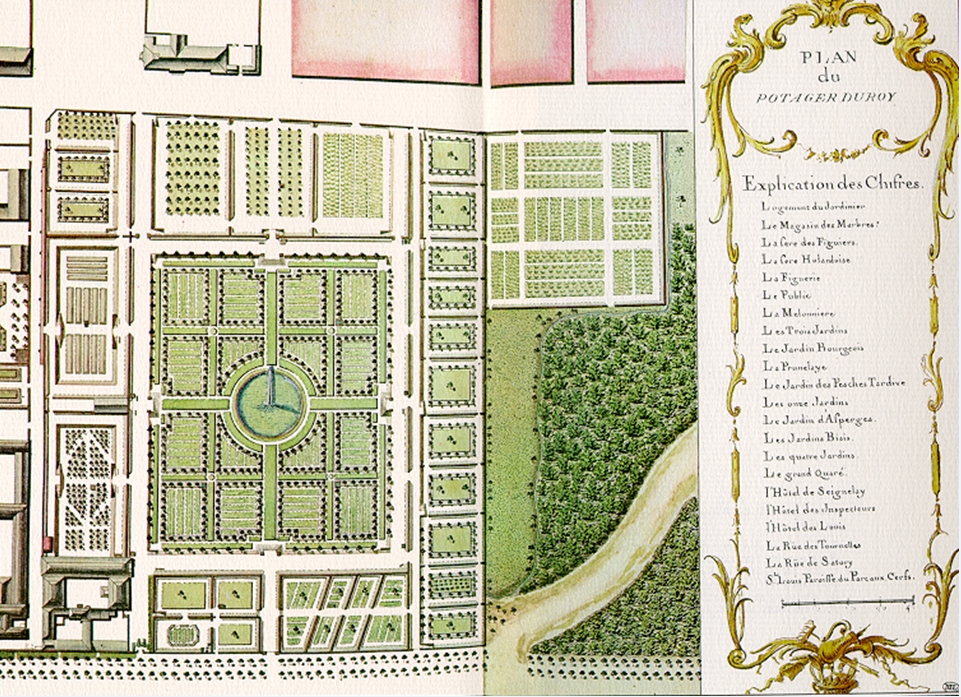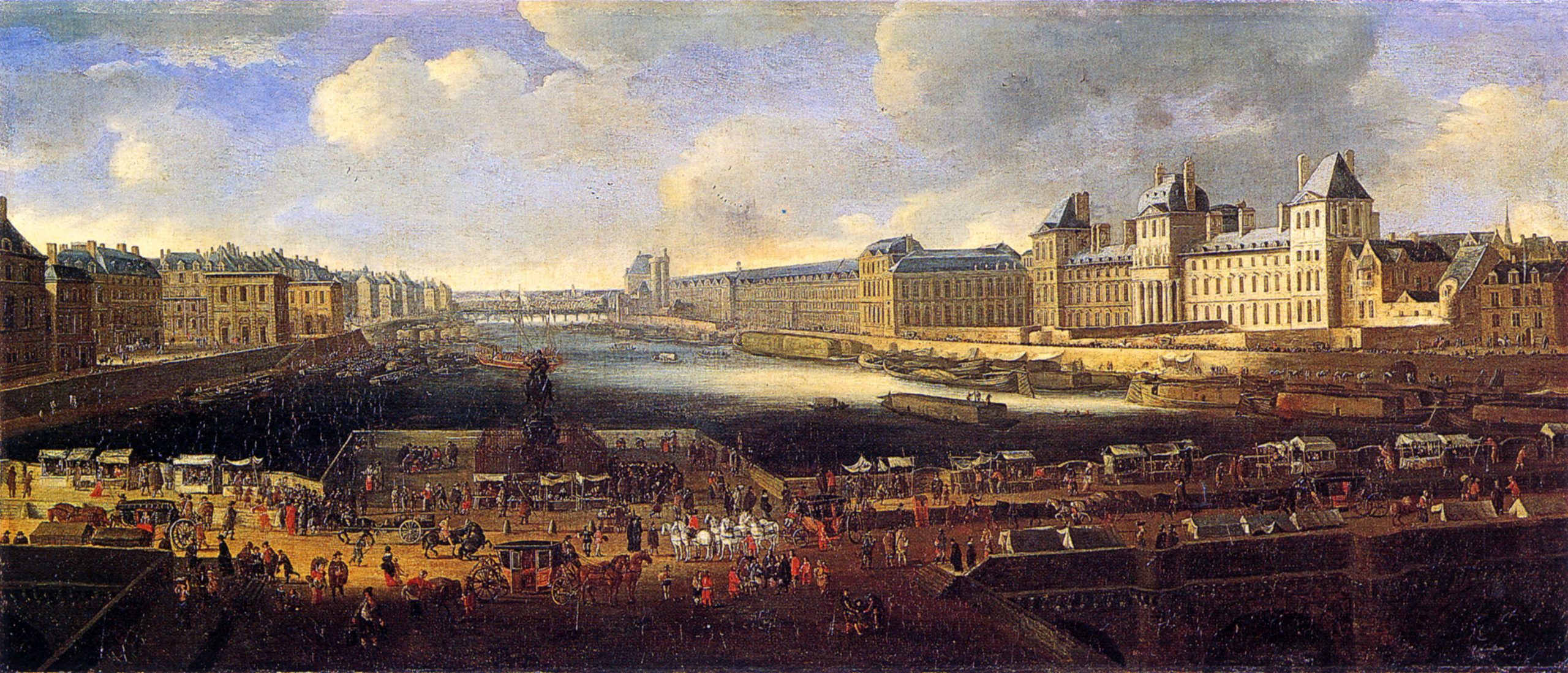Palais des Tuileries
When you stand at the large place in front of the Louvre and turn your gaze away from the palace and towards the street, you will see a beautiful garden in the distance. This garden once belonged to the Palais des Tuileries and said Palais was once connected to the Louvre, making the latter even bigger than it is today.
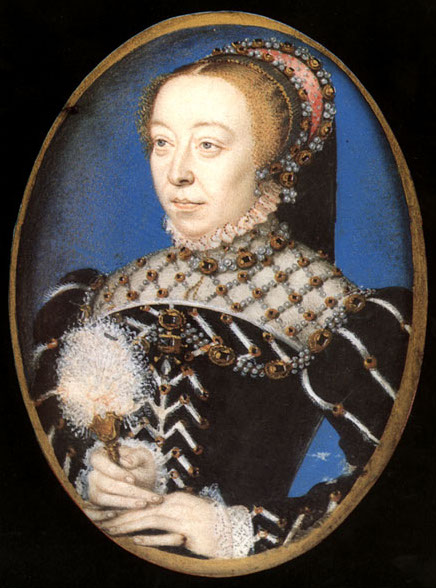
In the 13th century, the place opposite the Louvre was occupied by a tuilerie, French for tile factory. A century later, the provost of Paris had a Hôtel built there, which became known as the Hôtel des Tuileries, named after the tile factory. By the 15th century other gentlemen also built Hôtels there. Catherine de Médicis, wife of Henri II, bought all those Hôtels and the surrounding properties in the 1560’s.
She had in mind to have a palace built there after the tragic and sudden death of her much-loved husband. Henri II died at the Hôtel des Tournelles, which was owned by various French Kings over the years. Catherine never liked the house much, it was too old and too medieval in style for her taste. The fact that her husband died there, put her off further and she took it as a bit as a pretext to get rid of the building and have something better built elsewhere. The area in front of the Louvre was perfect for it. Thus all buildings occupying it were demolished after Catherine bought them.
Catherine asked the architects Philibert de l’Orme and Jean Bullant to design and built a palace for her west of the Louvre. What they came up with was quite ambitious. They wanted to create two large buildings connected by four shorter wings, which looked out to the Seine, the Louvre, three airy courtyards and a large Italian style garden. In the end, only the one of the two large buildings was actually built. It featured a large domed central pavilion with a vaulted staircase, considered to be a masterpiece, which was flanked by two wings. The south wing ended with a pavilion referred to as the pavillon de Bullant, the north wing was never finished.
Apparently while the construction works took place, Catherine was told by her astrologer Côme Ruggieri that she would die near Saint-Germain…. which could mean Saint-Germain the chateau outside Paris… or Saint-Germain-l’Auxerrois. The latter was a church close to the palace in construction. Legend has it, she, being very superstitious, became afraid of the thought of living at the planned palace and bought the Hôtel d’Albret in the Les Halles area instead. She turned it into what became known as the Hôtel de la Reine during her time and later on was known as the Hôtel de Soissons. The Tuileries project was gradually abandoned afterwards. Catherine died in 1589, not anywhere close to either of the Saint-Germains, but at Blois.

Henri IV, the first Bourbon King of France, took in mind to have the unfinished Tuileries connected to the Louvre via a long gallery along the Seine. It was built by Jacques II Androuet du Cerceau from 1607 to 1610 and became the Louvre’s famous Grande Galerie. At the same time, a smaller gallery, called the Petite Galerie, was built starting at the Tuileries’ pavillon de Bullant towards the Seine. Those two galleries were connected by a newly built pavilion, called the pavillon de la Rivière (pavillon de Flore today), and thus one could walk all the way from the Louvre to Tuileries without setting a foot outside.
After the death of Henri IV in 1610, the Tuileries were abandonment once more. Until Louis XIV took in mid to settle there instead of the old and gloomy Louvre when he was in Paris.
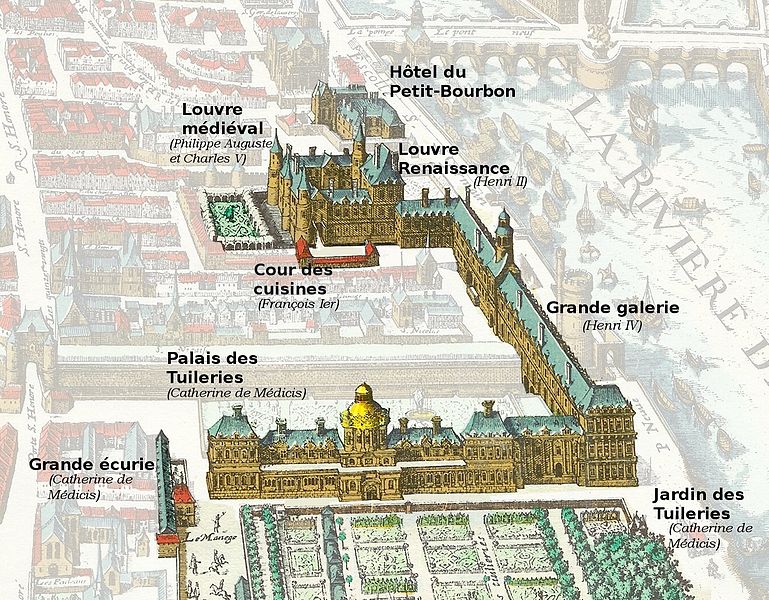
The Baroque period loved all things symmetrical, the Tuileries were far from it. The work done during the time of Henri IV to connect the Tuileries to the Louvre, added only to one side of the Tuileries and not the other. Thus Louis XIV hired Louis Le Vau and François d’Orbay to create a counterpart to the new additions on the other side of the building. The pavillon du Théâtre as created was counterpart to the pavillon de Bullant, the galerie des Machines as counterpart of Henri IV’s Petite Galerie, and the pavillon de Pomone (called pavillon de Marsan today) was built as counterpart of the pavillon de Flore.
With the palace being symmetrical now, Louis XIV instructed his architects to have a look at the older parts. Since there were many decades between the original construction, the Henri IV addition and those of Louis XIV, the palace was not just built in one style, but in quite a few. Le Vau thus took to rebuilding the central domed pavilion, called pavillon de l’Horloge, in the style that was more à la mode. It became wider, higher and its grand central staircase was replaced with a colonnaded vestibule on the ground floor and the Salle des Cents Suisses on the floor above. A new grand staircase was installed in the entrance of the north wing of the palace, and lavishly decorated royal apartments were constructed in the south wing. The King’s rooms were on the ground floor, facing the Louvre, and the Queen’s on the floor above, overlooking the garden.
The Tuileries were the home of many members of the royal family. La Grande Mademoiselle lived there from 1638 to 1652, the household of Louis XIV’s brother Philippe was installed in the Tuileries afterwards, Anne d’Autriche resided there for a while too, and between 1664 and 1672 it became the residence of Louis XIV.

After the court moved to Versailles, it became quiet in the Tuileries again. The palace received the occasional royal visit, but was mostly just used for theatre performances. The gardens however, became a attraction for locals and foreigners alike. Louis XIV had them remodelled by André Le Nôtre, who was the grandson of Pierre Le Nôtre, one of Catherine de Médicis’ gardeners. In 1662, Louis held a big fete, called the Grand Carrousel, at the space between Louvre and Tuileries to celebrate the birth of his heir. The place was named Place du Carrousel afterwards and is still called so today. By 1664, Le Nôtre began to work his magic in the gardens. He transformed the Italian style garden into a garden à la française, a style he had just developed at Vaux-le-Vicomte and would later be perfected at Versailles. Like the remodelled Tuileries, the garden was based on symmetry, order and long perspectives. The best way to behold such a garden is from an elevated position, thus Le Nôtre got rid of the street between Palais and garden and replaced it with a terrace looking down on flowerbeds and areas enclosed by low hedges and filled with beautiful flower displays.
To pretty the whole thing up even more, he placed ornamental lakes with fountains in the centre of the flowerbeds and created a 350 metres long alley called the Grande Allée. To smaller chestnut tree-lined alleys were created as well on either side of the Grande Allée. At the south side of the gardens, he built a terrace with view of the Seine and the garden, called Terrasse du bord-de-l’eau, and a counterpart of it on the west side, called Terrasse des Feuillants, which overlooked the gardens. Where the Place de la Concorde is today, Le Nôtre created two ramps in a horseshoe shape and two terraces overlooking an octagonal lake, 60 metres in diameter, with a fountain in the centre. To create all of this, hundreds of masons, gardeners and earth-movers worked on the gardens from 1666 to 1672. In first, the gardens were not open to the public and reserved for members of the court. Until Charles Perrault, famous author of fairy tales, petitioned the King to grant everyone entrance to the gardens. The Sun King agreed and the gardens were opened to the public in 1667, with the exception of beggars, people in livree and soldiers.

After Louis XIV died in 1715, his successor Louis XV moved into the Tuileries and stayed there from 1715 to 1722. The Palais came back to life during these years, just to fall into slumber again as the court moved back to Versailles. Later on, Louis XV granted various courtiers to live there and artists to set up their studios in the unoccupied rooms.
As the French Revolution brought chaos to the whole Kingdom, Louis XVI and his wife Marie-Antoinette were forced to leave Versailles for Paris. They set up residence at the Tuileries as sort of semi-prisoners for tree years. Their famous failed escape of 1791 began at the Tuileries and it was the Tuileries they were brought back to in the end. A year later, the royal family fled the Tuileries again, but under very different circumstances. A violent and armed mob besieged the Palais. As they gained entrance to the Palais, they cut their way through the Swiss Guards and massacred them. Close to 600 guards died during the storming of the Tuileries or were captured and later massacred by the crowd. The royal family fled through the gardens and took refuge with the Legislative Assembly across the street. The situation was eventually brought under the control and the royal family returned to the Tuileries once more, but under strict observation. Only a couple of days later, a guillotine was set up at the Place du Carrousel, straight in their view.

With the end of the monarchy, the Palais was renamed Palais National and accommodated the Constituent Assembly, its successor, the National Convention, and, in 1795, the Council of Five Hundred of the Directoire until the body moved to the Palais-Bourbon in 1798. In 1799, the Jacobin Club du Manège had its headquarters there. The Committee of Public Safety met in the Pavillon de Flore. When Napoleon Bonaparte came into power in 1799, he made the Tuileries his official residence as First Consul and later his imperial palace. The whole Palais was redecorated in the Neoclassical Empire style and refurbished. Napoleon himself occupied the former apartments of the King and thus slept in the same room Louis XIV, Louis XV and Louis XVI had slept in.
The Bourbon Restoration made the Tuileries royal residence again from 1814 to 1830. The Palais fell victim to another violent mob attack during the July Revolution of 1830. Remembering what had happened in 1792, the Swiss Guards abandoned the palace in a swift in fear of their lives. As Louis-Philippe became King, he also resided at the Tuileries, but reluctantly. He had just renovated the Palais-Royal, which he preferred as residence by far, but was not considered that fit to house a King. In February 1848, the Tuileries were under attack once more and looted.
In 1852, the Tuileries served as the official residence of the executive branch of government, and when President Louis-Napoleon Bonaparte became Emperor Napoleon III, he moved from his office at the Élysée Palace to the Tuileries. It was the time of the Second Empire and Napoleon III was to finish what Henri IV had started. Henri IV, who connected the Louvre to the Tuileries on the Seine side, also planned to do the same on the opposite side. In 1808, Napoleon began constructing of a northern gallery, which like the one to the south, was meant to connect the Tuileries to the Louvre, but it was not finished until Napoleon III. By 1870, the Louvre and the Tuileries became finally one and formed the largest palace of Europe… and the next year, the Palais des Tuileries was set on fire.
Using petroleum, liquid tar and turpentine, twelve men under orders of Jules Bergeret set the Tuileries on fire at seven o’clock in the evening of 23 May in 1871. The walls, floors, drapes and woodwork were soaked with oil and turpentine, and barrels of gunpowder were placed at the foot of the grand staircase and in the courtyard, along with explosives under the central dome. The fire raged for forty-eight hours and destroyed everything apart from the Pavillon de Flore. The Richelieu library of the Louvre, connected to the Tuileries, was also set on fire and entirely destroyed. The rest of the Louvre was saved by the efforts of the museum curators and fire brigades.
While the interior and roof was completely destroyed, the stone walls of the Tuileries stood for another eleven years until their demolition was ordered under the Third Republic. In 1882, the French National Assembly voted for the demolition of the ruins and sold them a private entrepreneur, which later sold stones and marble as souvenirs. Parts of the Tuileries were sold to Corsica and used to build the Château de la Punta, which is pretty much a reconstruction of the Pavillon de Bullant. Other parts were used in buildings all over Paris, while some were placed in the Louvre. A part of the Tuileries even found its way to Berlin, were it was put on the Insel Schwanenwerder.
After the destruction of the Tuileries, idea of a reconstruction of the Louvre and Tuileries palatial ensemble has been put forward several times. Since 2003, the Comité national pour la reconstruction des Tuileries pushes the idea in form of a reconstruction similar to the proposal of reconstruction of the Berliner Stadtschloss, which is currently under way. Not just to make the area “whole” again and to make the Tuileries garden a palace garden again, but also to expand the exhibition space of the Louvre. As it is now, many objects are hidden away in the Louvre storage, which could be put on display in the reconstructed Tuileries. It would be also possible to reconstruct various Tuileries apartments with the help of the many photographs the Archives nationales owns. All the furniture and paintings from the Palais survived the 1871 fire, because they had been removed in 1870 at the start of the Franco-Prussian War, and were stored in secure locations. They could be all put on display. It is estimated the reconstruction would cost around cost 300 million Euros, which could be financed by a private foundation. If you are interested in the project or fancy to support it, the Comité national pour la reconstruction des Tuileries has plenty of information on their website.
